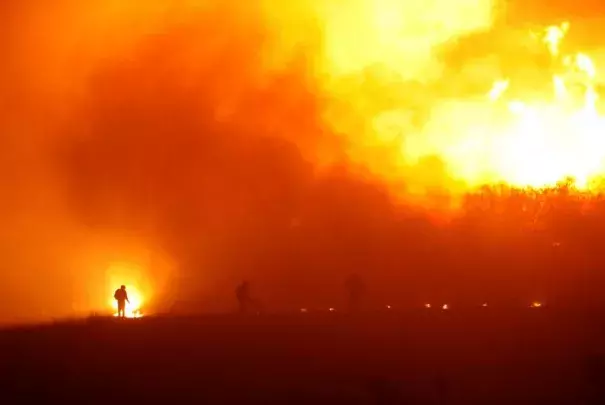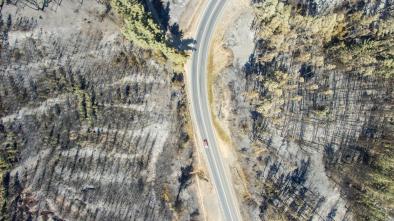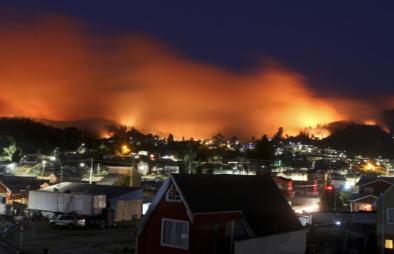Chilean Wildfires are Worst to Ever Strike the Country

Drought in Chile has now lasted for more than a ten years.
Yearly precipitation deficits have ranged from 30-70% for most of central Chile for the last decade. But the ongoing drought’s intensity has increased since 2011. The result has been “an unprecedented drought in terms of intensity, spatial and temporal extent.”
Over recent days, the forests of Central Chile appear to have finally succumbed to the unprecedented and unrelenting punishment. One by one, massive wildfires ignited through Chile’s bone-dry woods — scorching hillsides, decimating more than 100 vineyards, and resulting in the tragic loss of four firefighters. As of today, more than 85 wildfires have burned approximately 190,000 hectares of land — or about 733 square miles.
This charred chunk of Chile more than half the size of Rhode Island represents the worst fire disaster in the state’s history. Now, nations are scrambling to help Chile respond to the crippling disaster as more than 35 large fires continue to rage out of control.
...
These massive fires serve as the most recent book-end to a crippling climate change related situation that has been impacting Chile and larger South America for years. The fire situation has obviously been set in place by current ‘Mega Drought’ conditions. A drought period that “stands out not only in the historical record but also in precipitation and stream flow reconstructions for the last 1000 years.”
It’s a drought situation that’s replete with climate change related signals. Negative Pacific Decadal Oscillation (PDO) values helped to push Chile into a dry phase through 2012 even as drying was considerably stronger than during past negative PDO periods. As PDO flipped to positive from 2013 onward, related El Nino conditions failed to bring expected rainfall to the state and drought conditions worsened. Due to these factors, climate researchers note: “there is an strong suggestion that anthropogenic climate change is [at least in part] responsible for the present Mega Drought.”
(It’s not just wildfire-ravaged Chile. Large regions of South America are also experiencing severe drying which is helping to increase wildfire risk. Such drying is a feature of human-caused climate change in that human-forced warming due to fossil fuel burning increases evaporation rates and related stress to forests even as it drives fundamental alterations to precipitation patterns that can substantially worsen drought and wildfire intensity. Image source: NOAA.)
Climate change also appears to be driving drying in neighboring South American states like Brazil and Bolivia — where severe droughts and related warming are drying up massive lakes and helping to worsen the wildfire situation in the Amazon Rainforest. In Bolivia, drought has combined with a climate change driven removal of key mountain glaciers that has produced an endemic state of water scarcity. In Brazil, warming and deforestation are combining to remove a large portion of the atmospheric moisture plume that the great Amazon Rainforest provides. So the historic Chilean wildfires should also be considered in the larger context of ongoing South American droughts related to climate change.
Related Content





